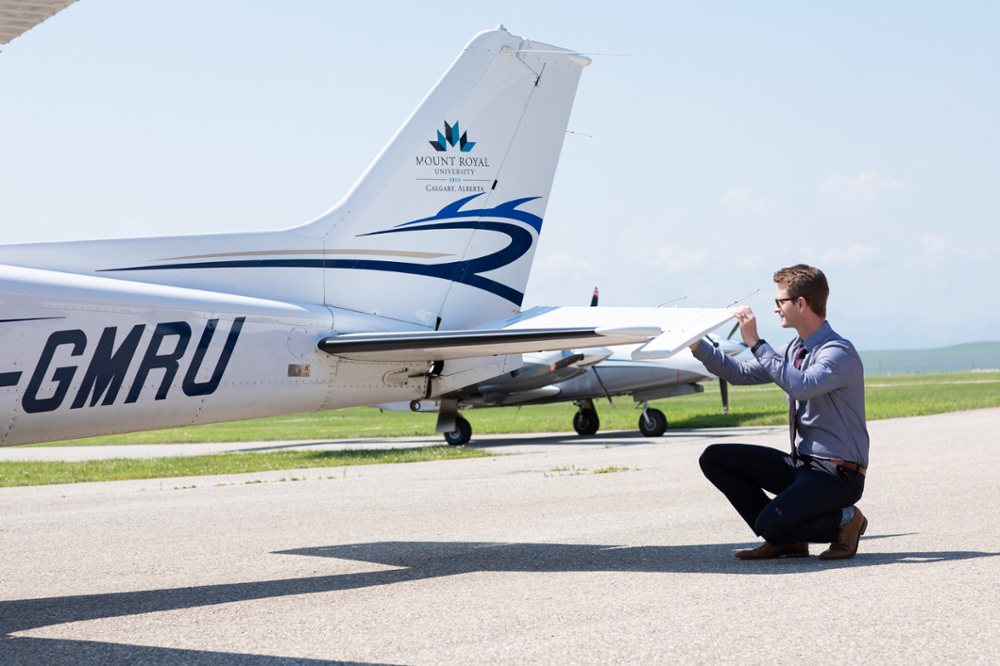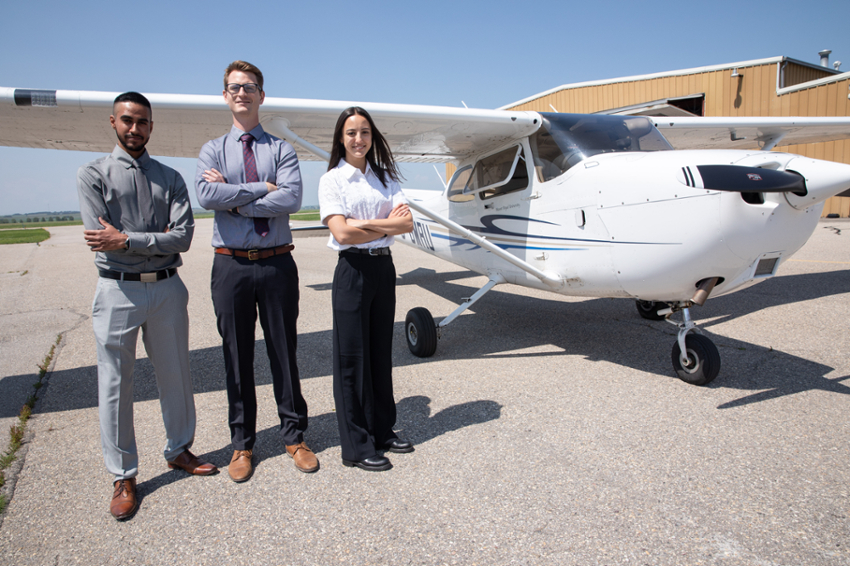Frequently asked questions
1. Why should I attend the Mount Royal University (MRU) Aviation diploma program?
Come fly with more than 1,000 pilots worldwide who owe their success to Mount Royal's nationally respoected two-year Aviation diploma program. The program is one of Canada's elite programs integrating academic preparation with commercial pilot, multi-engine, instrucment and simulator training. During your program you will:
- Learn aviation and business theory
- Build connections with MRU's airline partners, Jazz, WestJet, Porter, Airsprint, Sunwing, Canadian North and more
- Understand how to fly in single and two-pilot environments
- Build knowledge of Crew Resource Management
- Grauduate with fellow pilots and enter an industry where the qualifications of Mount Royal Aviations grads are well known
Opportunities for highly training pilots are on the rise and Mount Royal Aviation Graduates are READY TO FLY.
2. What can I expect as a course of studies at MRU Aviation?
Your course of studies includes aviation education and non-aviation post secondary courses as well as flight training for eight months of the year. Flight training is offered year-round and it is strongly recommended that students continue to fly through the summer months.
3. What partnership programs are available through Mount Royal Aviation?
Jazz Aviation Pathway Program
Jazz Airlines and MRU Aviation have formed a partnership whereby Jazz Airlines will grant an interview to a graduate who scores above 80% in all Transport Canada exams and has a grade point average above 3.0 for a possible First Officer position. Other graduates are welcome to apply to Jazz Airlines when they accumulate 1,000 hours of experience. (Non-MRU Aviation pilots must have a minimum of 1,500 hours to apply). Here is the link to the Jazz Pathway Program.
Other partnership programs are available with Sunwing WestJet Encore, AirSprint, Porter and Canadian North
4. What is the difference between the MRU Aviation program and other Alberta college-based programs?
Both the academic and aviation components of the MRU Aviation program are administered by MRU who own the aircraft and simulators. The flight staff and instructors are employees of the University. In this way, MRU can ensure the quality of both flight and academic requirements of the MRU Aviation program.
Our curriculum is based on industry procedures, stressing safety for the single-pilot and two-pilot operating environments, and therefore graduates are better prepared for their first aviation jobs. Academically trained pilots are preferred by the airlines and have more opportunity for advancement in the aviation industry. MRU student’ progress through the program as a cohort, creating a sense of team which aids in the flight education and creates a network of pilots upon graduation.
5. Why do I need a Category 1 Medical and how long does it take to get it?
Before starting the Aviation program, students must be medically fit to fly commercially. Aviation medicals are provided by any licensed civil aviation medical examiner. As it can regularly take up to 90 days during regular for government paperwork processing, it is strongly recommended that applicants start with obtaining the Category 1 Medical several months prior to the first semester. You can find a qualified civil aviation medical examiner in your area through the Transport Canada Civil Aviation Medical Examiners Search.
6. Does MRU Aviation conduct Private Pilot Licence (PPL) training?
Mount Royal offers the PPL training. To learn more, read about the MRU PPL progam. The PPL is the first licence acquired on the way to becoming a commercial pilot.
7. Is the PPL a prerequisite for the Aviation diploma program?
The PPL is a prerequisite to begin flight training in the aviation diploma program.
Acceptance into the Aviation diploma is dependent upon the academic admissions process. Please find further information about the Aviation diploma Admissions Requirements.
Holding the PPL is not a requirement for acceptance into the Aviation diploma program. We strongly advise that aviation students hold the PPL or be very close to the completion of the PPL when beginning the aviation academic portion of the diploma program (AIRF courses). Those who have been accepted into the diploma program who are in the beginning stages of their PPL training are strongly advised to begin with the General Education and Business courses while delaying the aviation academic courses until the following September. This path will spread the workload over three years instead of two.
8. What training aircraft is used by MRU Aviation?
MRU Aviation has the most modern and state-of-the-art training fleet in Canada providing our students with a better understanding of modern avionics. The MRU Aviation training fleet consists of:
| Eight (8) Cessna-172 | 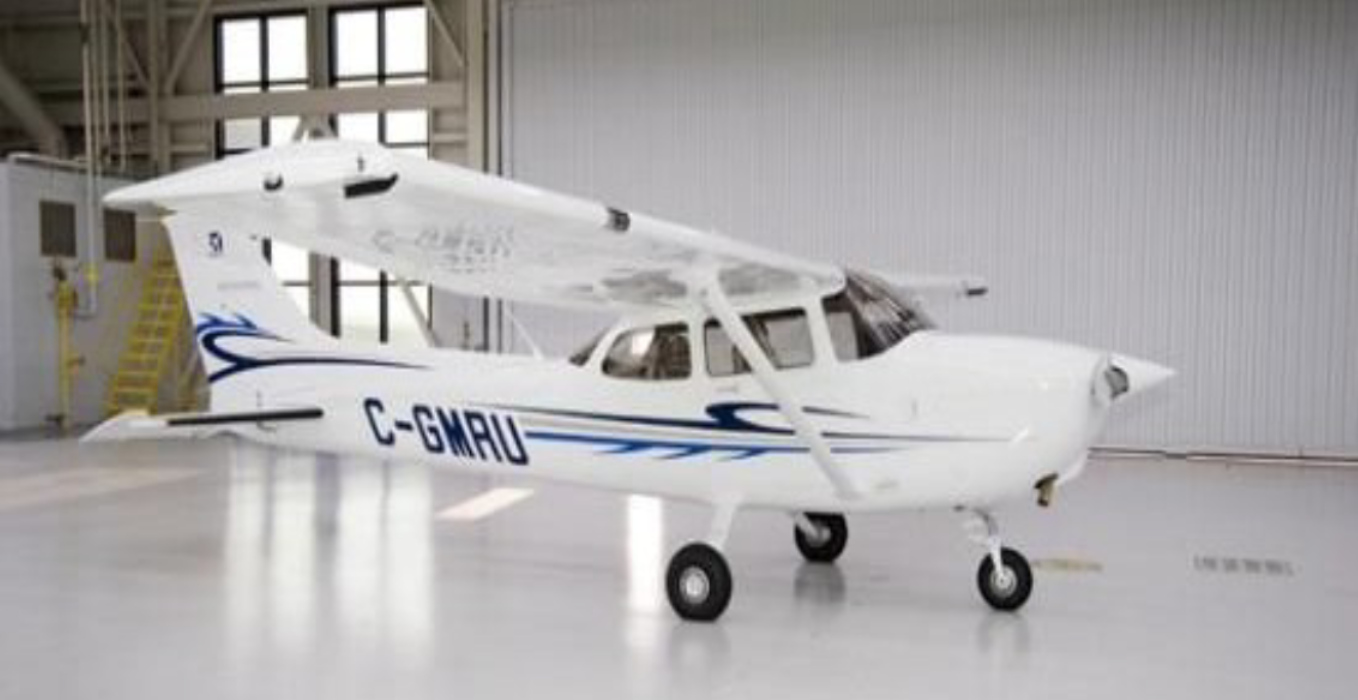 |
| Two (2) Twin-engine Seneca V | 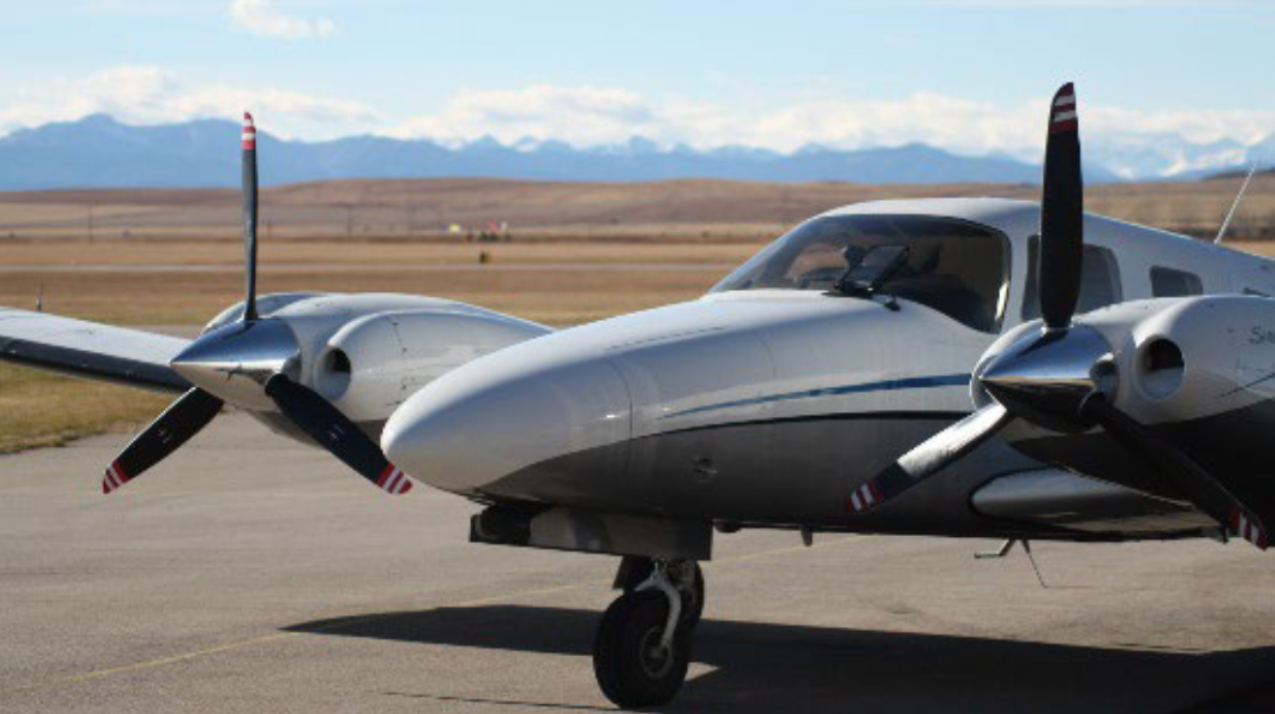 |
| Seven aircraft are equipped with modern avionics – Garmin G1000 | 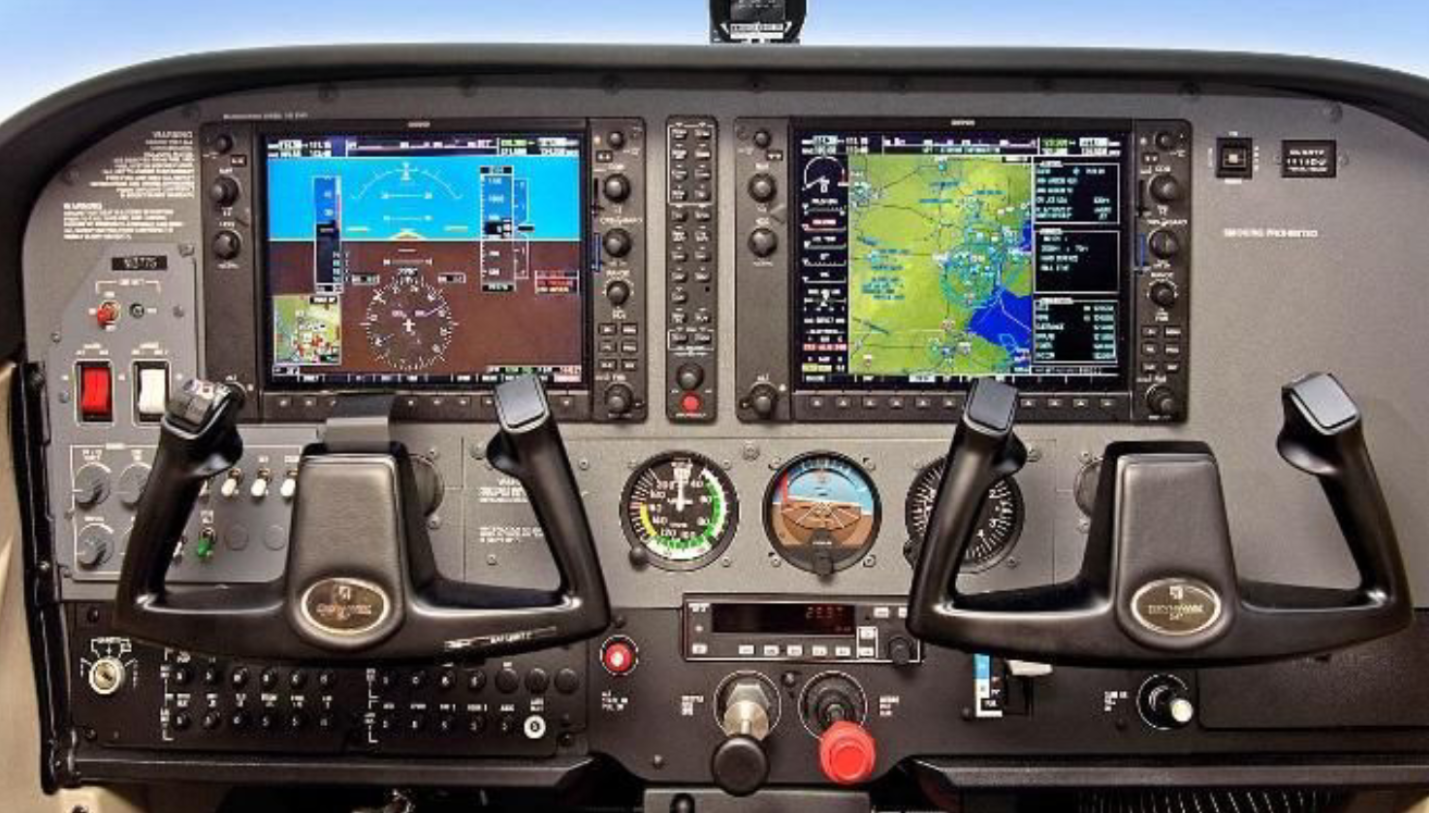 |
9. Does MRU have a rental aircraft?
All of our 8 Cessna 172’s are available to rent exclusively for MRU Aviation students, with a priority for flight instruction.
| C-FSTP | 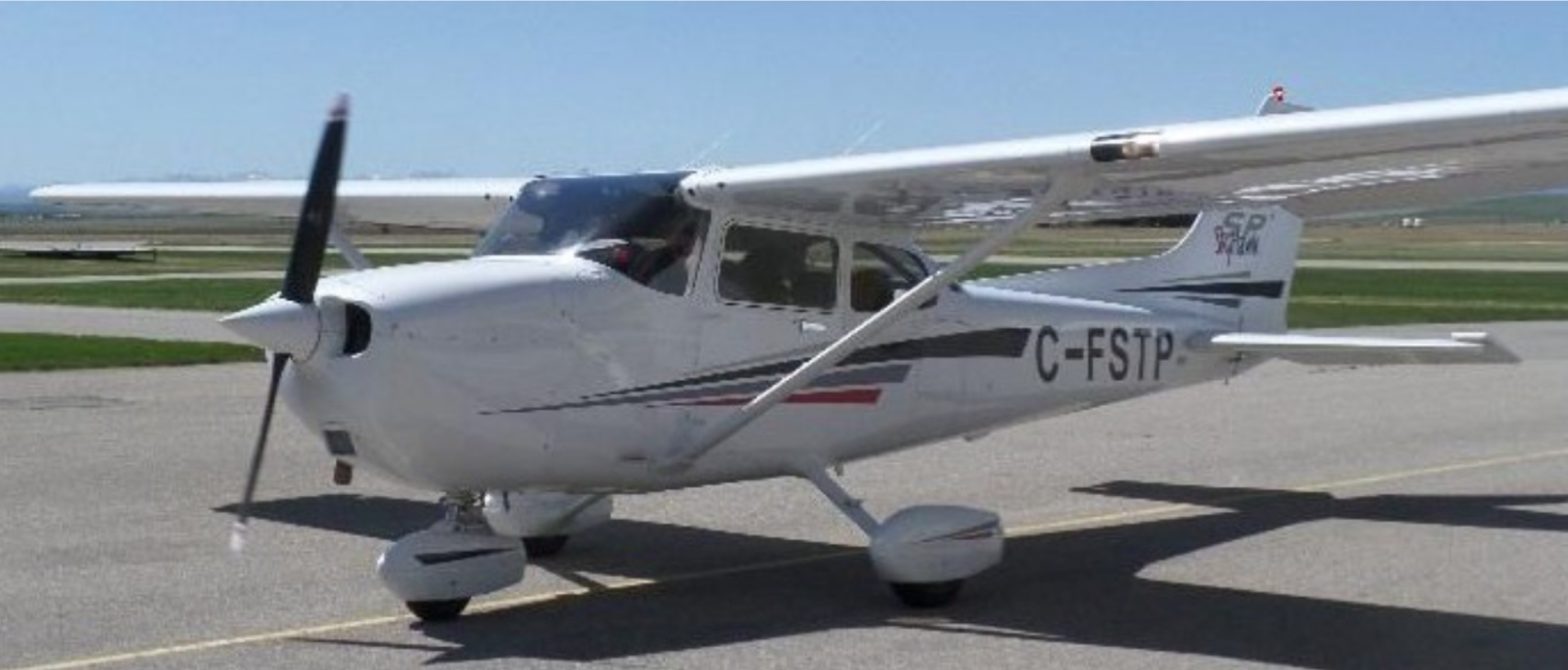 |
10. What simulators does MRU Aviation use in training?
The Alsim simulator is used to instruct students how to work in a multi crew environment using the principles of Crew Resource Management and Threat and Error Management.
We have three simulators:
| Alsim ALX 20 | |
|---|---|
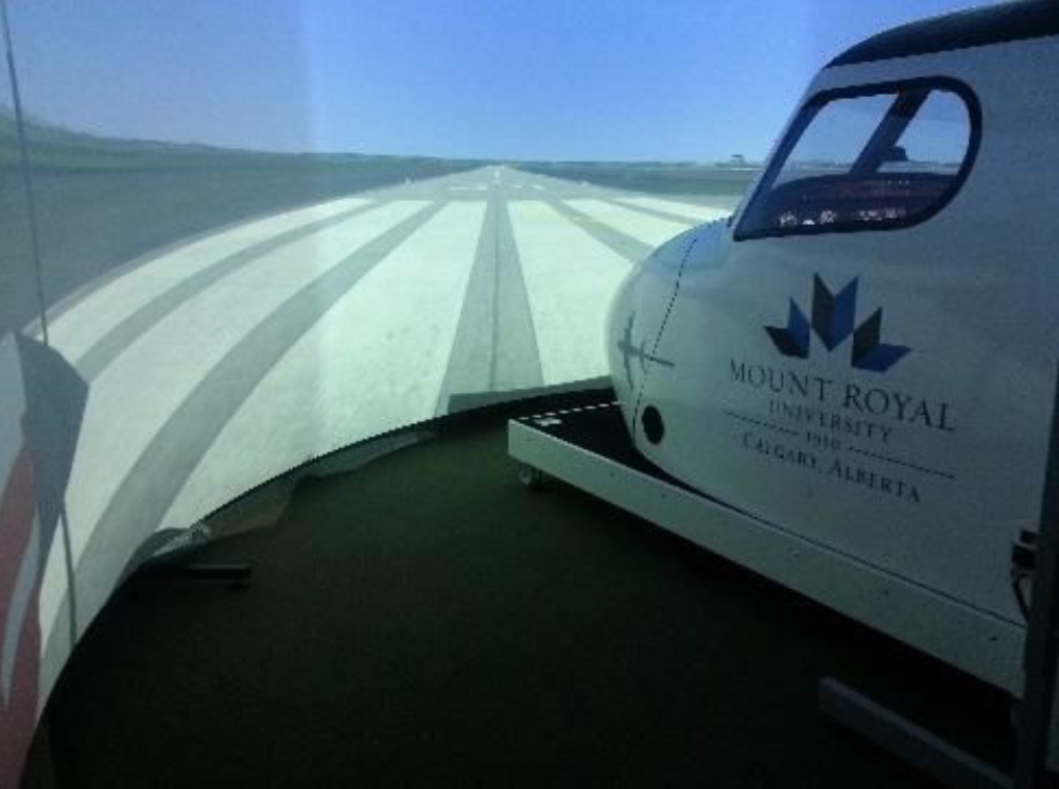 |
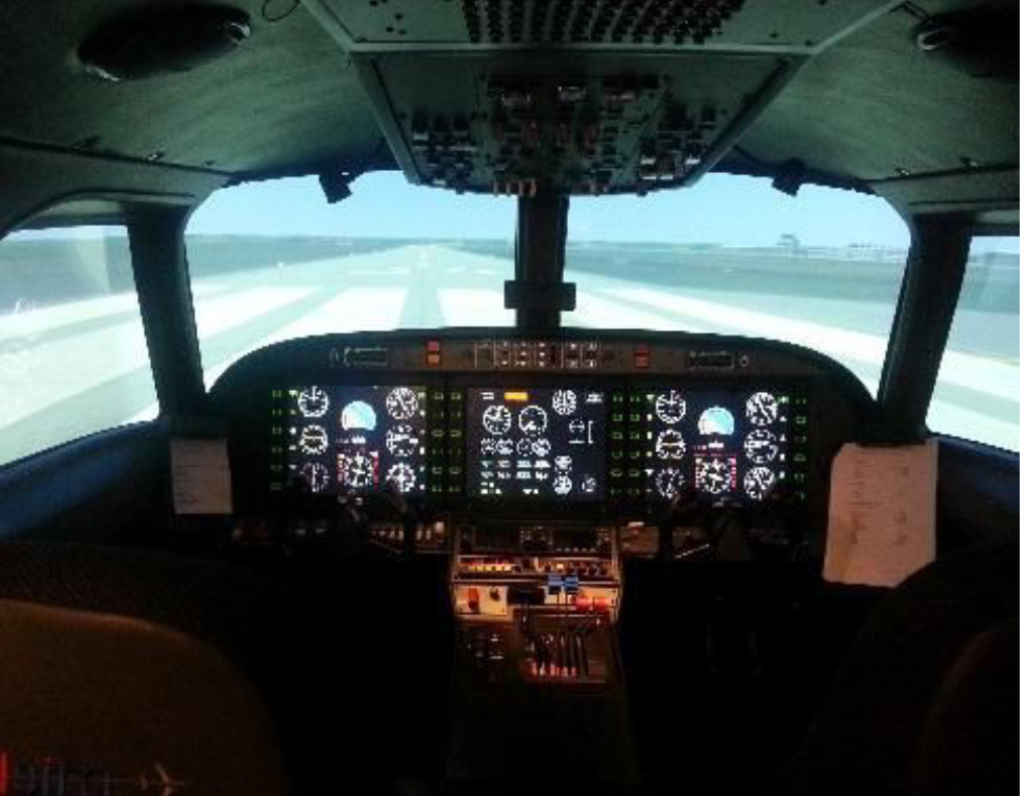 |
| Frasca Mentor | Redbird crosswind trainer |
|---|---|
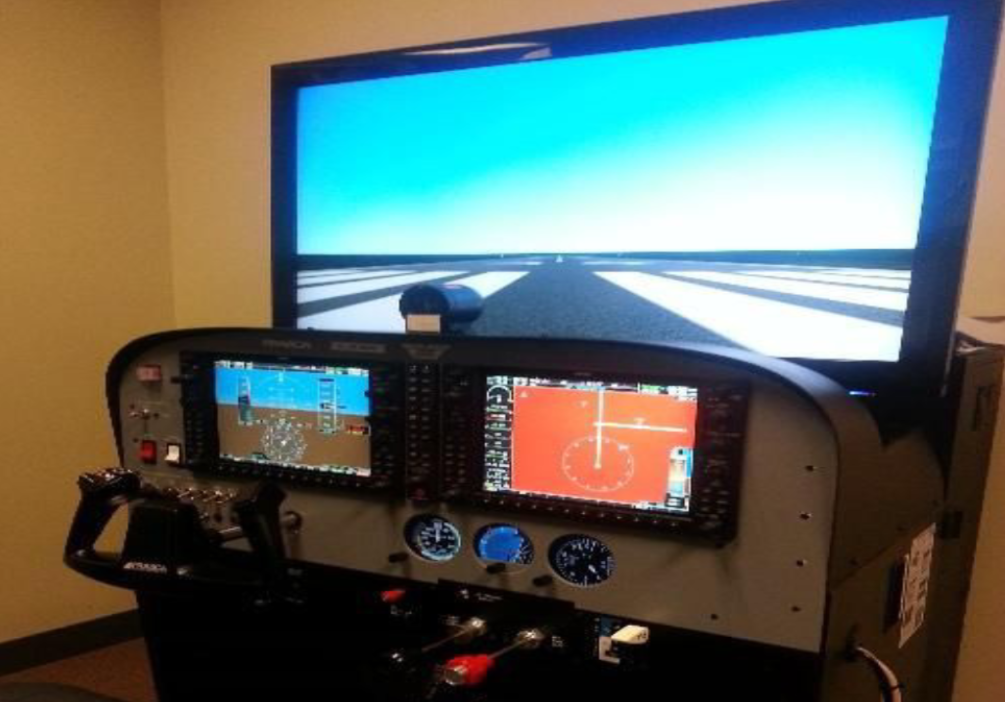 |
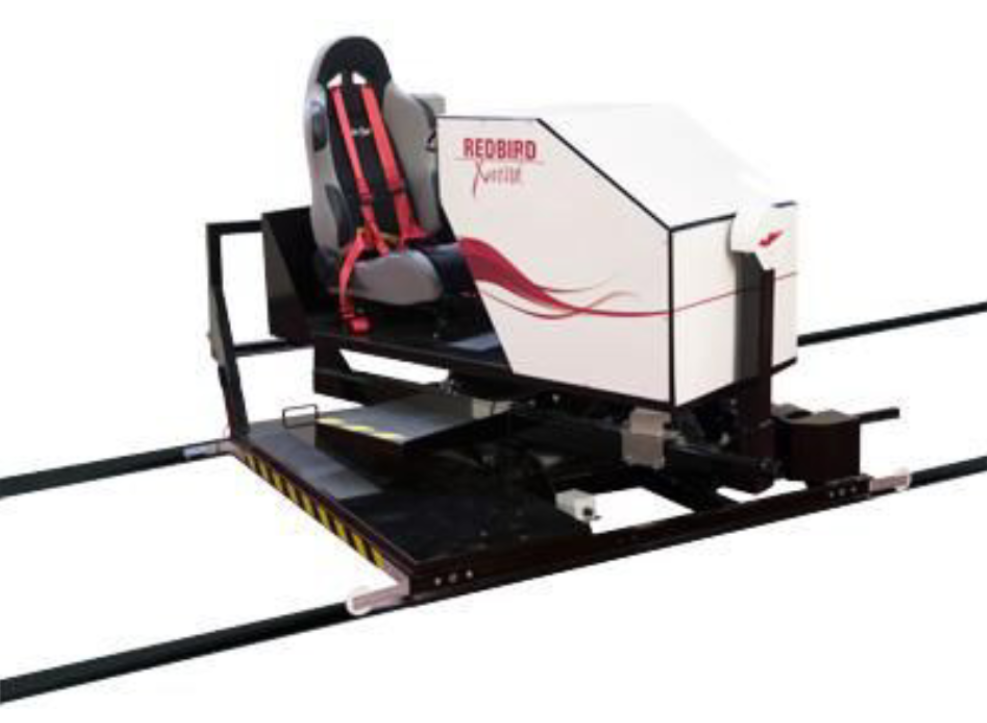 |
11. Where are classes conducted?
The academic and aviation classes are held at the MRU campus located in the Lincoln Park neighborhood, close to downtown Calgary. The Alsim and Mentor flight simulators are also located at the main campus. Flight training is performed at the Springbank Airport campus (CYBW) which is west of Calgary city limits, about a 25 minute drive from the MRU main campus. As there is no public transportation to the Springbank Airport, you will need a car to commute to your flight training sessions.
12. What is the total cost of the diploma program including academic and flight training?
For the two years of the MRU Aviation Diploma program, flying costs are approximately $73,391.85 for the minimum required courses. Students who take the PPL at MRU receive a credit for FLTR 1100, so the minimum cost is $68372.32.
Use the budget calculator to figure out your budget based on your program choice and personal expense. The 2024-25 Aviation Student Tuition Fee Schedule shows the costs of flight training courses. The aviation course listing in the academic calendar shows both the academic and flight courses required to complete the Aviation Diploma Program. See also the list of estimated tuition and costs.
13. Do Aviation students pay for all of the flight courses at the start of each semester?
There are ten flight courses to be completed throughout the two year diploma program, with details in the content above. As students move from one flight course to the next, payment is required for each course prior to starting that course. Most students will require additional flight curses at some point in their training, dependent on individual process. These fees are reuired to be paid when the additional training is assigned by the instructor.
14. Is student financing available to MRU students?
Student financing is available to Aviation Diploma students with amounts provided to each student dependent on their personal circumstances. Further information can be found at the Student Finance page.
15. What courses do aviation students take if they start in January?
As all Aviation specific courses start in September, and Aviation students take Aviation courses as a group, Aviation students who start in January will take required, non-aviation courses only. Starting in January means the program will take 2.5 years, and can be a good option as this spreads the program workload over an additional semsester.
16. Is the MRU program accredited?
The MRU Aviation program is accredited through the Aviation Accreditation Board International. This body ensures that our program meets their international flight training and academic education standards and ensures that we continue to improve our program.
17. What are the degree options?
Your Mount Royal Aviaiton diploma also enables you to go on to higher study. Diploma graduates can apply to transfer course credits into the Bachelor of Aviation Management program, or can apply to begin the MRU Bachelor of Aviaiton Management program. Degree completion options exist through other university partnerships.
18. What are the job prospects upon graduation?
The aviation sector continues to grow worldwide. Global markets demand a global transportation system, and the job opportunities are endless. An Aviation diploma may lead you to:
- Flying regional, national, or international passenger routes for a commercial airline.
- Transporting corporate executives with charter airlines
- Doing pipeline and fire patrol
- Working for a courier company
- Delivering Cargo
- Joining the Canadian Armed Forces
19. Can I tour the facilities?
We are pleased to be able to provide tours of the Simulator on main campus as well as a hangar tour at the Springbank Campus. Please note the Springbank campus is approximately 30 minutes drive from the main campus. To make arrangements for these tours, please email us at aviation@mtroyal.ca. As well, you can Book your campus tour online.
20. How can I get Aviation specific questions answered?
Please review the content of the website for Aviation information. Should you have other questions, please email aviation@mtroyal.ca and one our dedicated staff will be happy to provide an answer.
Apply today or contact the Admissions and Recruitment department with any questions.
20. How do I apply?
Visit our Application page and follow the link that applies to your situation. Applications are accepted starting on October 1.
